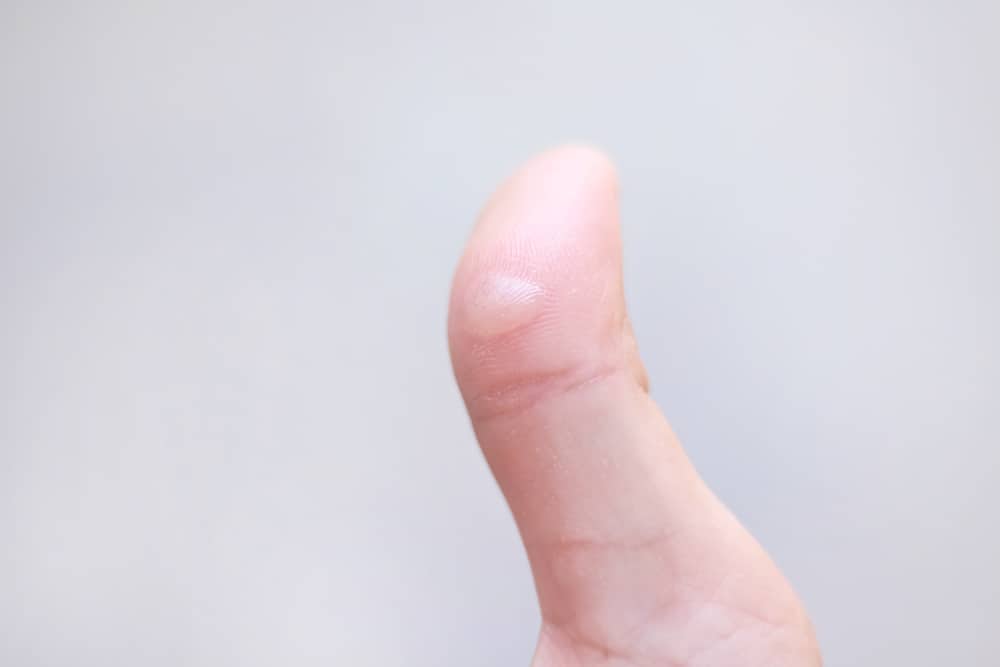
When you first start playing the game of golf, there is a chance that you will end up getting some blisters.
These blisters are painful, and you will want to do everything you can to get them to go away as quickly as possible.
The blister on the thumb can usually be prevented if you follow certain steps.
The good news is that most of the time, you can learn how to get rid of these blisters for good and start enjoying playing the game a bit more.
Blister on Thumb from Golf (Remedies, Prevention)
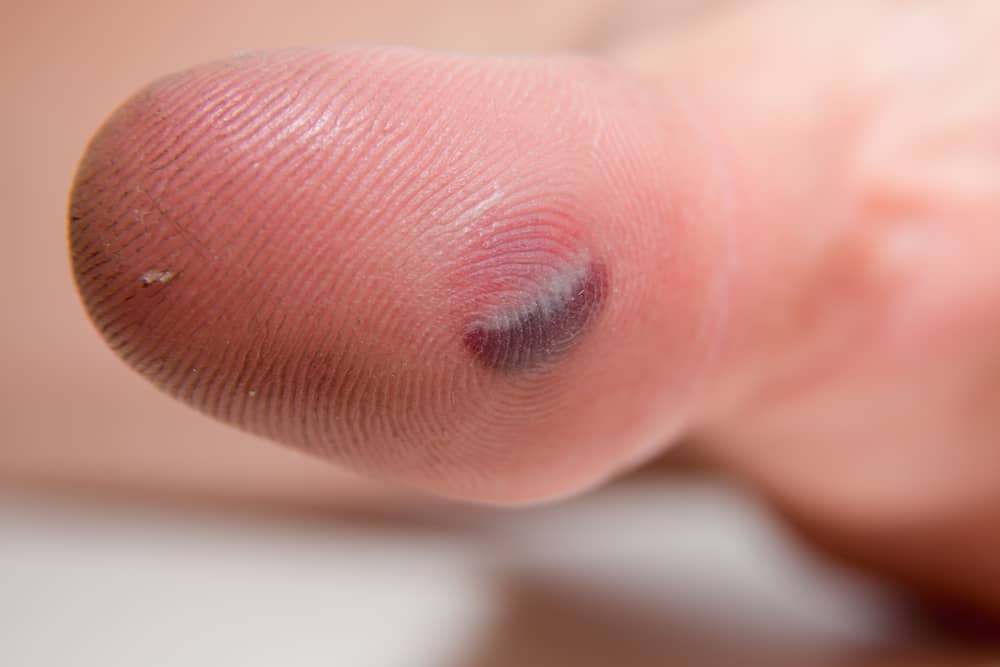
A blister is typically cause caused by friction between your skin and the golf club.
This happens to golfers who are new to the game because this is a new sensation, but it can also happen if the grip is not correct.
Many times, blisters will occur because the golf grip is actually incorrect on the golf club.
If the grip is correct, then the blisters could simply be because of irritation on the skin.
The irritation could be because the grips are rough and potentially falling apart.
Even the cord-type grips are not designed to rip at your hands.
You have to find something that feels comfortable so that you can get your hands in the right position and make sure that they feel comfortable.
Sometimes if you have not played golf for a while, the first time you head back out for the season, your hands may get a blister or two.
The chances are that after a day or so, they will be healed, and you won’t get them again for the rest of the season.
Another time players tend to get blisters is when they are accustomed to playing with a glove, and they start practicing without it on.
Chances are your hands are not ready for this change, and you may end up experiencing a few blisters early on.
As you can see, there are many different ways you can get a blister.
Some of these things can be avoided, and others are more difficult to avoid.
It really doesn’t matter if you have been playing the game for a month or your entire life because you can still end up with a blister.
The best thing you can do is have some potential avenues for preventing the blister so that this will hopefully not happen.
Ways to Prevent a Blister
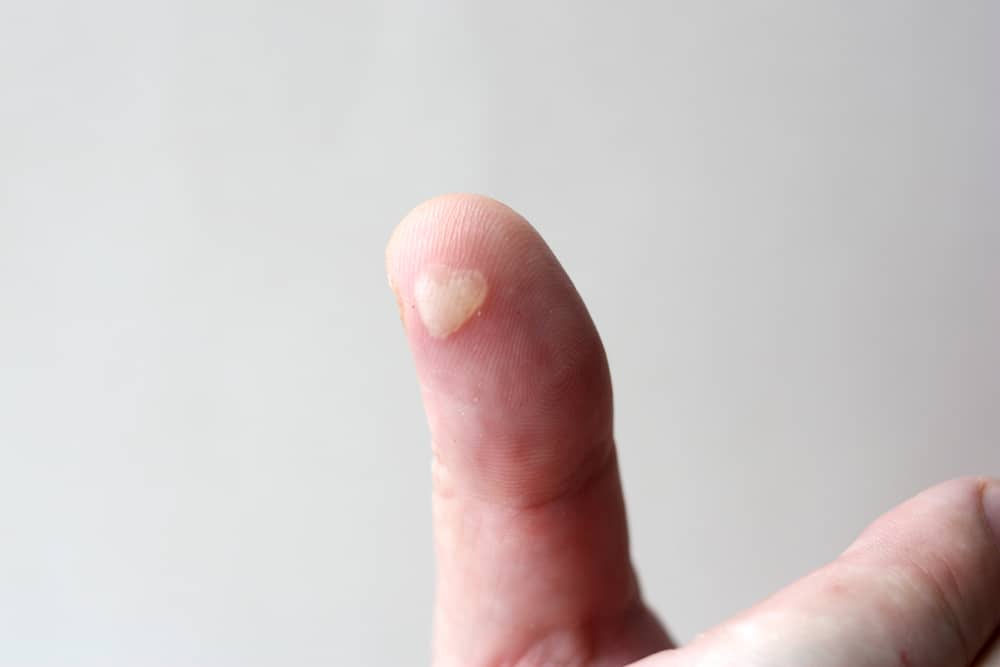
As we mentioned, it doesn’t matter if you are a golf professional or spending your first day on the golf course, you can still end up with a blister.
The good news is that there are ways to avoid this blister by taking the proper preventative measures.
Here are some of our best tips for avoiding the blister on the thumb from golf.
1. Wear Tape
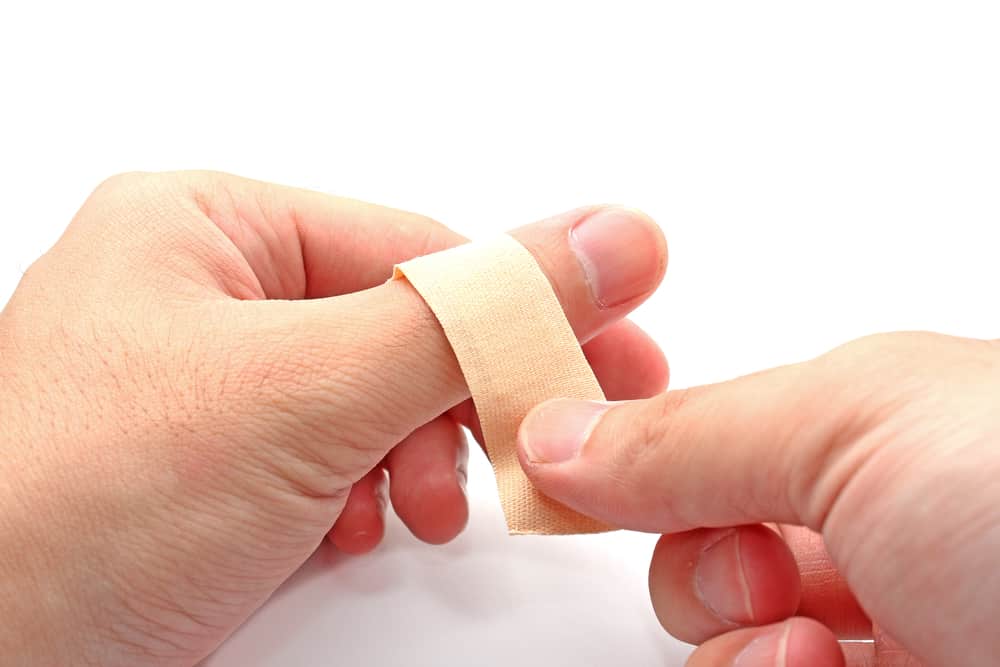
If you have ever seen a serious golfer on the range, you will notice that they are wearing tape on their fingers.
This is probably because they are spending so much time practicing and hitting golf balls that they need to make sure their hands are protected.
Regular medical tape is thin enough to grip the club, but it still has an excellent feel.
However, it is also thick enough that the tape is going to provide a border on the finger to keep them protected.
Tape is an easy thing to keep in your golf bag and then put it on whenever you notice that there is an irritation starting.
You can keep it on throughout your entire round, and chances are it will not wear down.
Overall, wearing tape is one of the best solutions, especially for those who don’t like to wear a golf glove.
2. Glove
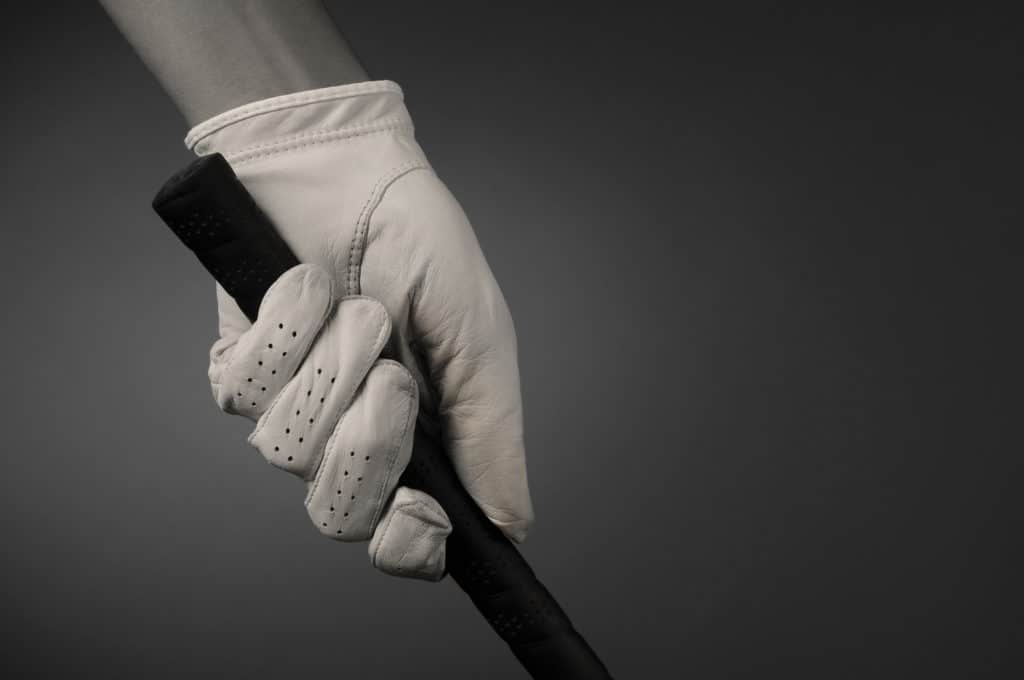
A golf glove is the most well-known way to prevent golf blisters.
People who struggle with golf blisters will often put one on each of their hands to keep themselves from being in pain.
A golf glove is an excellent choice because it provides protection for a number of different areas all at once.
The tape that we suggested is more of a solution when the problem is located in one specific area.
In addition to preventing blisters, gloves can also help golfers feel as though they have a more secure connection with the club.
With the more secure connection, it is easier to make solid contact and not have to worry about controlling the club incorrectly or causing a miss-hit because of grip pressure.
In addition, gloves can be worn at all times of the year.
There are options that will be a good fit for the summer, rain gloves for poor weather, and winter gloves for the cold.
Even if you don’t really enjoy having a golf glove on, you should have one in your bag on the days that you may need to prevent a blister from occurring.
3. Grip Training Aids
If you think the blisters you are developing are related to the fact that you have an improper grip, then you can purchase some golf training aids.
There are several different aids that are going to help make sure that you have the proper grip on the club.
Sometimes you can even install a training aid on one of your clubs so that you have a baseline of how your hands should be placed when playing golf.
Grip training aids will help you quickly realize whether or not you have been gripping the club properly.
The training aid is a simple solution, and it is one that works quite well.
We love that you can put a grip training aid in your hands on days when you are not even at the golf course.
This is a great way to get some extra practice time in and eventually learn to keep the blisters away as well.
4. Clean Your Golf Clubs
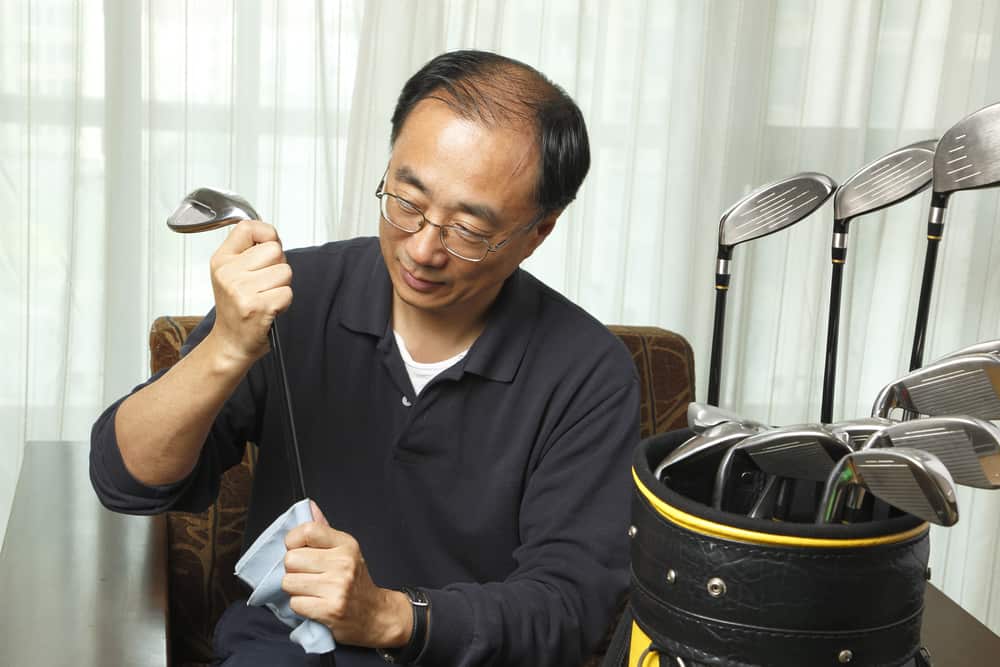
Do you clean your golf clubs often?
When you clean them, do you also clean your golf grips?
Most people will not clean their golf grips when they work on cleaning their clubheads.
This is a mistake.
Golf grips should be cleaned often.
The area where you hold the club tends to get very dirty, and it will collect bacteria, sand, and debris.
If you don’t correctly clean this grip, it can cause an irritation to your skin.
Then, when you do get a blister, you are exposing it to a dirty golf club the entire time until you finish your golf round.
Cleaning golf grips is not hard to do.
Simply take a bucket of soap and water and use a microfiber cleaning cloth to get the grip cleaned.
You can use a brush with soft bristles to help remove some of the debris as well.
One of the most important things to do is to give the grip plenty of time to dry out before using it again.
Put the grips outside the bag in a shady area at your home outside.
Allow them to sit out for a few hours, and you should have no issues with the grip being dirty in the future.
Clean golf grips can go a long way in helping you control grip pressure and keeping your golf game in great shape as well.
5. Check Your Golf Grip Pressure
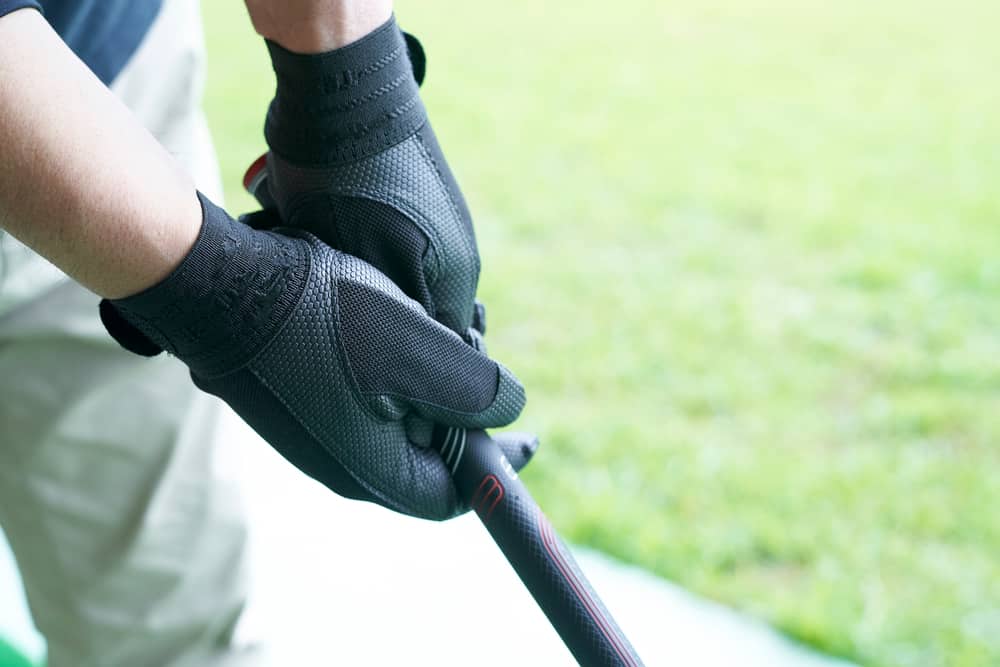
Your golf grip pressure can cause you to get blisters.
There is no reason to grip the club tightly.
Many golfers do this because they are stressed when they play, and they are trying to control where the golf ball goes.
Having more grip pressure in the swing is not going to help anyone play better.
In fact, when you have too much grip pressure, it usually makes you hit some pretty poor shots.
The grip pressure makes it difficult to release the club and turn your hands over as they are supposed to.
The golfers who can learn to grip the club lightly often end up getting more distance out of their shots as well.
The extra distance comes from the ability to allow the club to move freely and pick up some extra clubhead and ball speed.
If you are gripping the club too tightly, you will lose out on a number of great benefits.
Keep this in mind, regardless of what type of player you are, light grip pressure is important.
6. Use a Band-Aid
Another great way to keep a blister away is to wear a Band-Aid in an area that feels as though a blister is starting.
You can also wear a Band-Aid in an area that you have noticed a blister before.
Keeping your hand protected in certain spots is going to make it much easier to prevent the blister from occurring again.
Most great golfers will keep several Band-Aids in their golf bags.
If you think you may have a blister already starting behind the Band-Aid, you can use a little Neosporin on the Band-Aid to make sure that it doesn’t stick too tightly to the blister.
Band-Aids are better for protecting spots where blisters previously appeared, but the tape is the best solution when you know you are going to be spending lots of time on the course and want to protect yourself.
How to Treat a Golf Blister
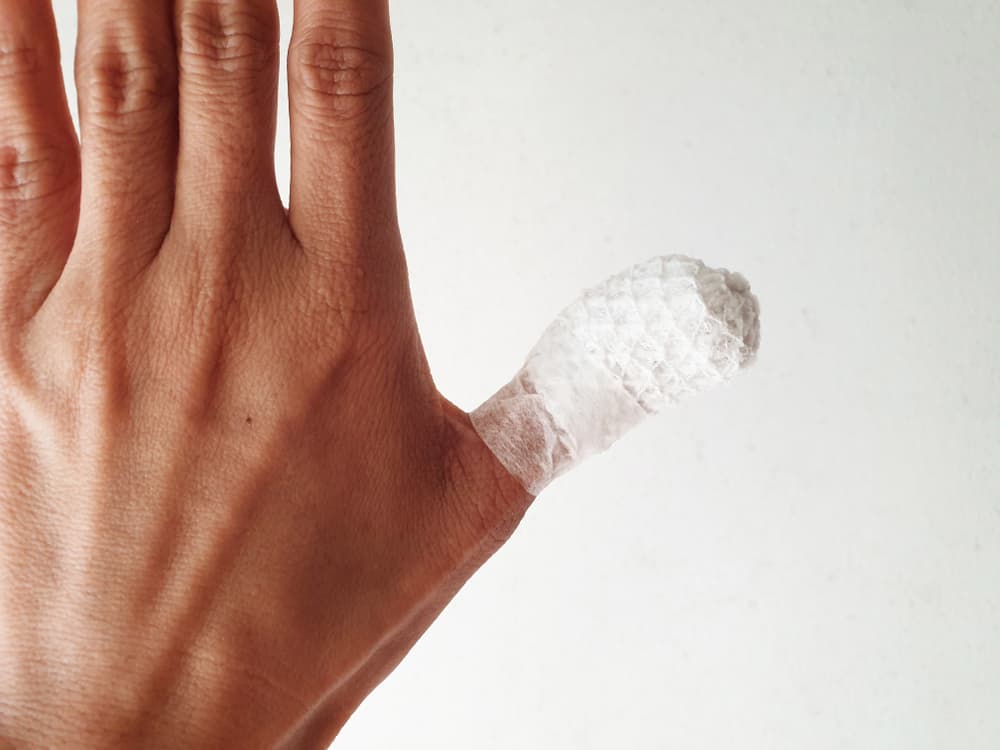
If you already have a blister on your hand, chances are golf has become quite a painful sport.
Luckily, there are some things you can do to try and get the blister to heal a little faster.
Let’s take a look at the best way to treat a golf blister.
The quicker you take action, the better.
Step 1: Cover the Blister
The first step in the process is that you are going to want to cover the blister.
You can use a Band-Aid or a wrap to do so, but you will want to do this as quickly as you can.
When the blister is open, it is subject to dirt and oils getting on or in it, and this is a bad thing for the healing process.
You will want to make sure the blister is properly covered as soon as you realize you have developed one.
It is best to leave the blister lightly covered.
If you end up covering it too tightly, it could stick and hurt your hand even more.
Step 2: Use Padding
With how uncomfortable a blister can be, it is essential to use padding to make you more comfortable.
The best way to do this is with gauze.
You can cut gauze so it fits around the border of your blister, and then you can attach it with the Band-Aid.
When you do this, it tends to take some of the pressure off your blister and give it some room to breathe and heal.
This is a great way to set yourself up to still be able to play golf while you have a blister.
At least, you will be able to enjoy the rest of your round without being in too much pain.
Step 3: Let the Blister Heal
The best way to get rid of your blister for good is to let it heal naturally.
This means you will have to let it pop on its own and drain if necessary.
Do not try to pop your blisters before they are ready.
This will actually end up being more painful, and it could lead to a higher chance of infection as well.
Keep the blisters covered, let them breathe a bit, and then give them the time to heal on their own.
This may impact your golf rounds for the next few days, but after that, you should be well on your way to a blister-free season.
Make sure to follow our tips for preventing a blister if you want them to stay away for good.
Will I Get Blisters Every Time I Play?
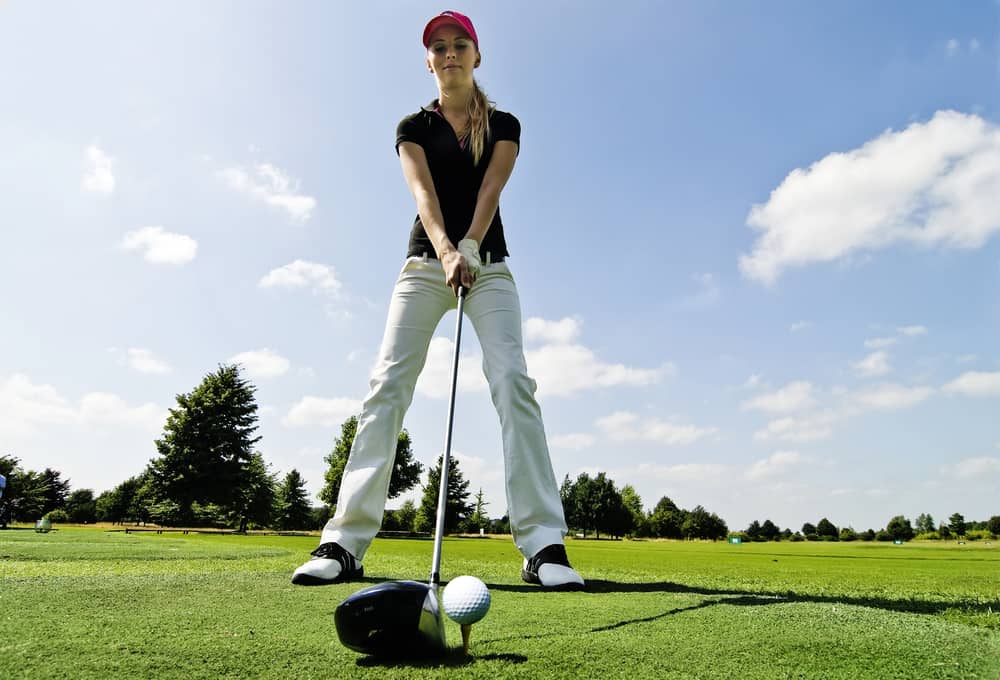
The good thing about golf blisters is that once they heal, the skin where they healed tends to be a little tougher and more resistant to the next blister.
The chances of you continually getting a blister in the same location are going to be quite rare.
Expect blisters when you play more golf than you are used to and when you have not played in a long time.
Keep an eye on the hands of young children when they are learning the game.
As they continue to grow and change their grip, they will be subject to quite a few blisters.
It’s also important to teach them about proper grip pressure from the start as this is the only true way for them to improve and proceed with the game as well.
Conclusion
Hopefully, you now know how to handle a blister on your hand from playing golf.
Blisters don’t always mean that you are gripping the club incorrectly; it could simply mean your grips need to be replaced or cleaned.
In addition, you need to check your grip pressure.
Your hands could be on the club properly, but you are simply putting too much pressure on the club itself.
If you are finding that blisters are hard to keep away, follow our preventative measures, and you should have no further issues.
Eventually, your hands will get tougher, and you will be able to handle the blister issue much better.



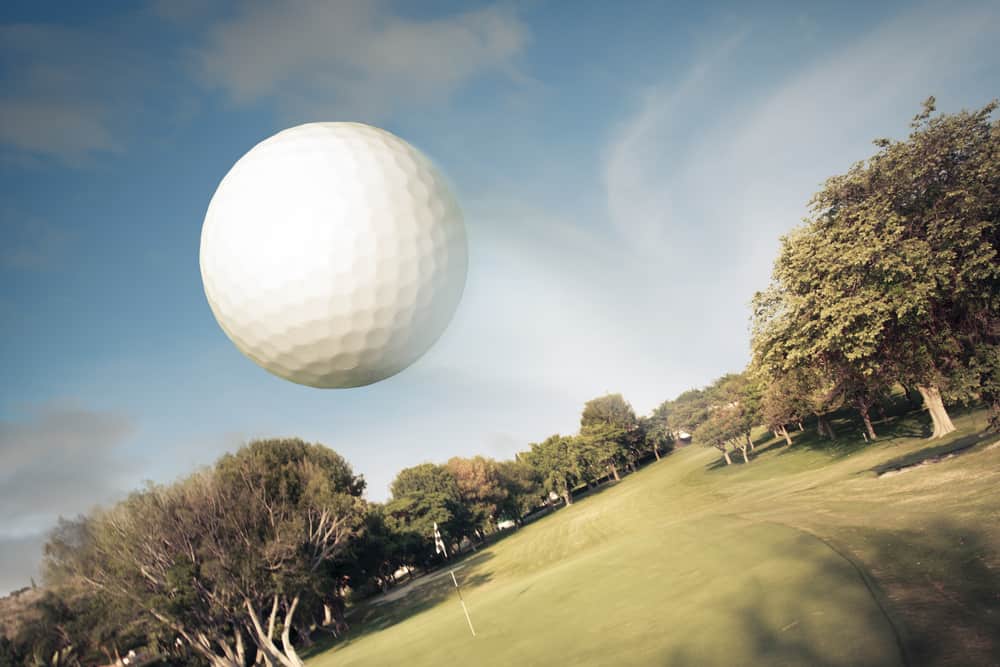
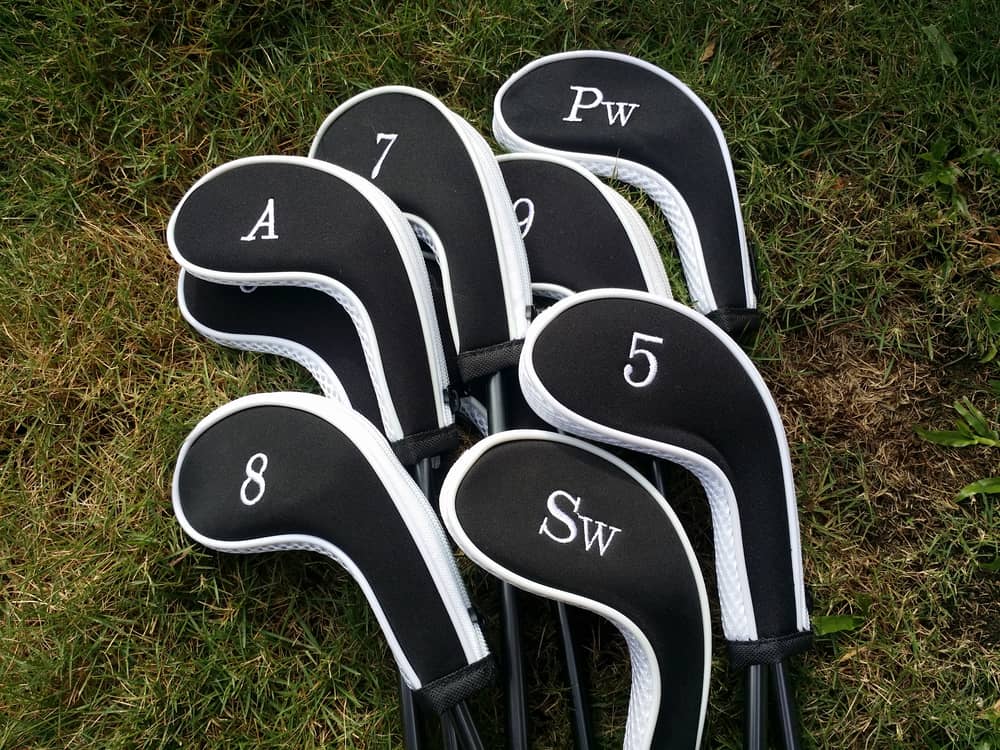
Leave a Reply